How to create your RentCast account, manage API keys and authenticate API requests.
We use API keys to authenticate all requests to our REST API, and to track your API usage and billing.
Follow this guide to learn how to create a RentCast account, activate your API subscription, create an API key, and make your first API request.
Creating a RentCast Account
If you don’t have an existing RentCast account, go to our website, click the Sign In button on the API dashboard page, and follow the prompts to create your account:
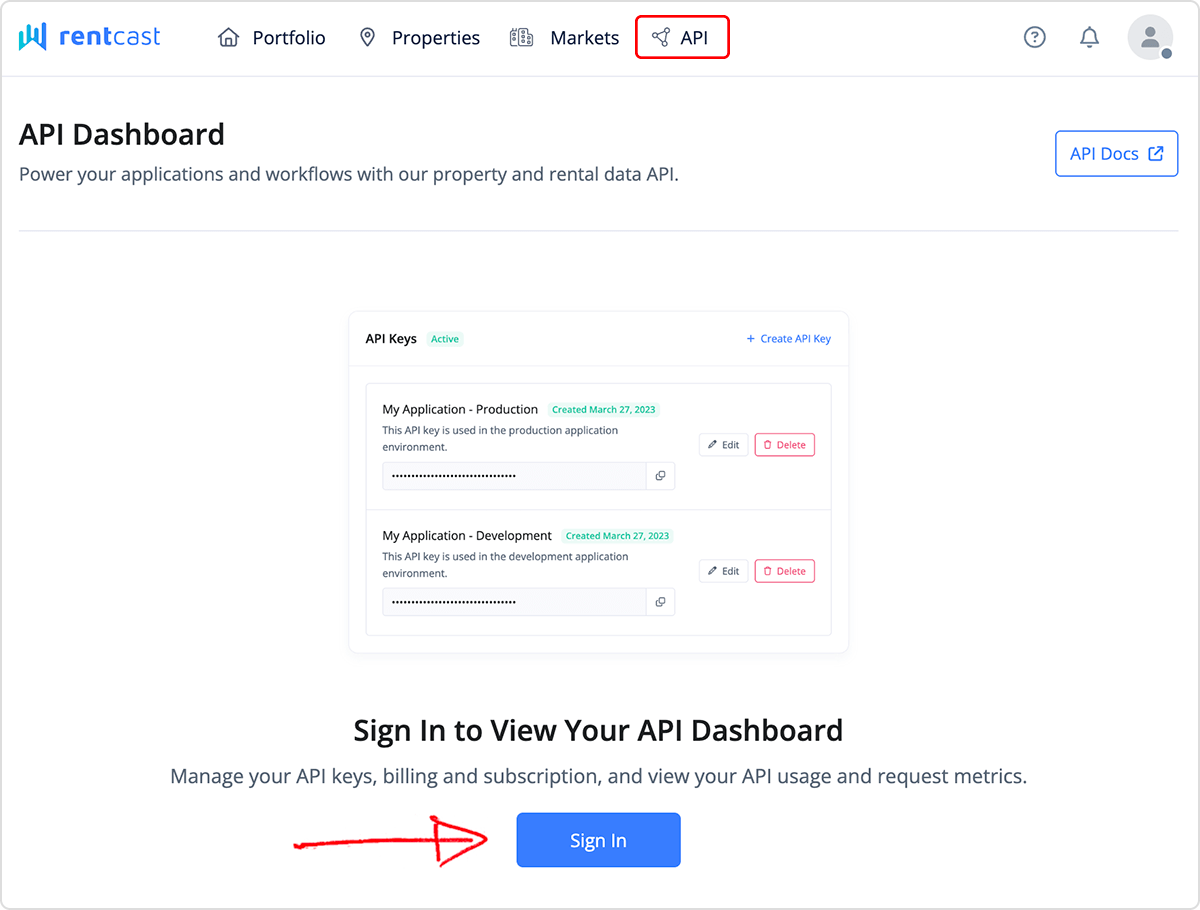
If you have an existing RentCast account, you do not need to create a new one to use our API. You can sign in to your existing account to use our API and the rest of the RentCast website.
Selecting an API Billing Plan
Before using our API, you need to sign up for one of our API billing plans and activate your subscription.
We offer a free plan, that comes with 50 free API requests per month to allow you to test our API and develop your integration. Additional pricing plans are available for production applications and higher-volume use cases.
You can sign up for one of our API billing plans by clicking Select Plan on the API dashboard page, and following the prompts to activate your subscription:
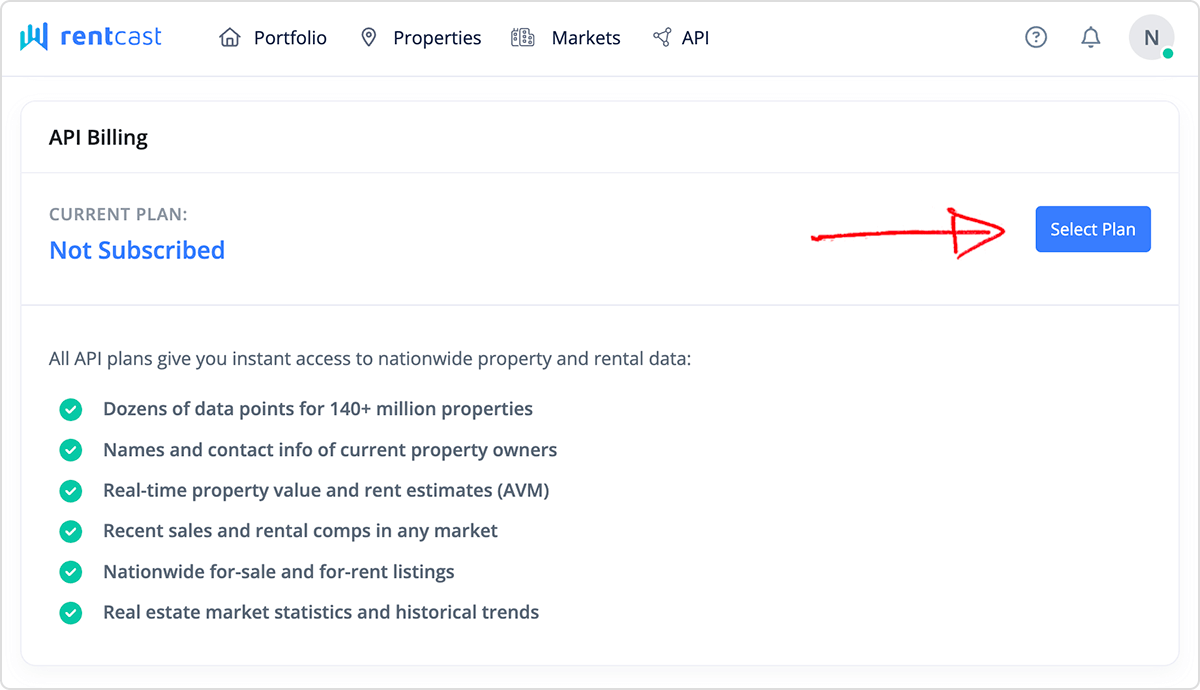
Our API billing plans have a fixed monthly price, as well as a per-request overage fee. Once you reach your monthly request limit, you will be charged the overage fee for each additional request.
Creating an API Key
You can view, create and delete your API keys on the API dashboard page.
Click Create API Key and follow the prompts to create your first API key:
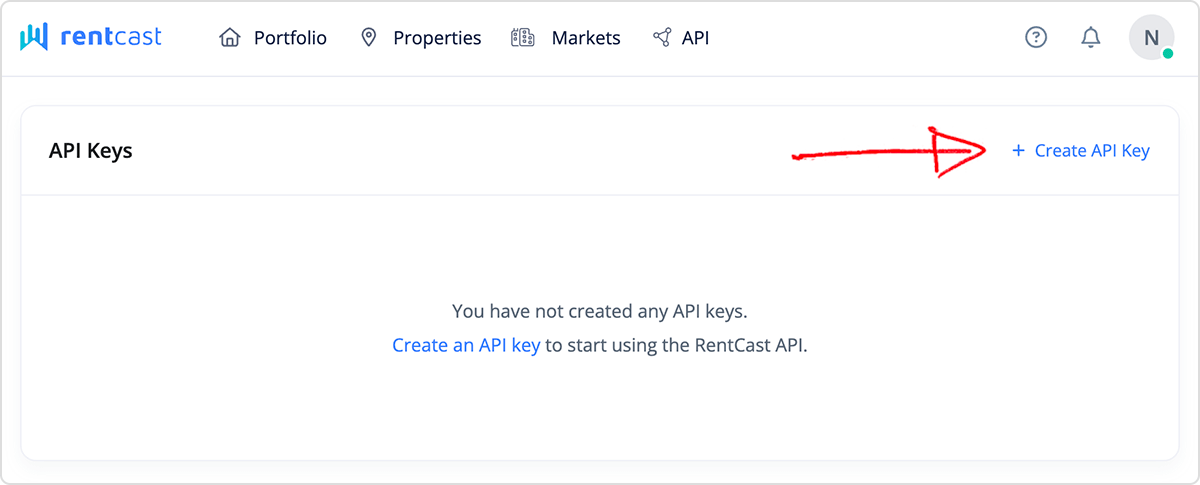
API keys are unique strings that are used to authenticate all API requests and track your API usage and billing.
If you are working on a single integration for personal or business use, you will likely only need a single API key.
If you have multiple applications or different services using our API, we recommend creating a separate API key for each of them to help you track their usage independently and increase your security posture.
API keys are meant to be kept secret and should never be exposed in any client-facing, front-end or publicly-accessible code. If you believe one of your API keys was compromised, we strongly recommend deleting it and replacing it with a new one.
Deleting an API Key
If you no longer need a particular API key, or if you believe that one of your keys was compromised or leaked to the public, you can delete it from your API dashboard:
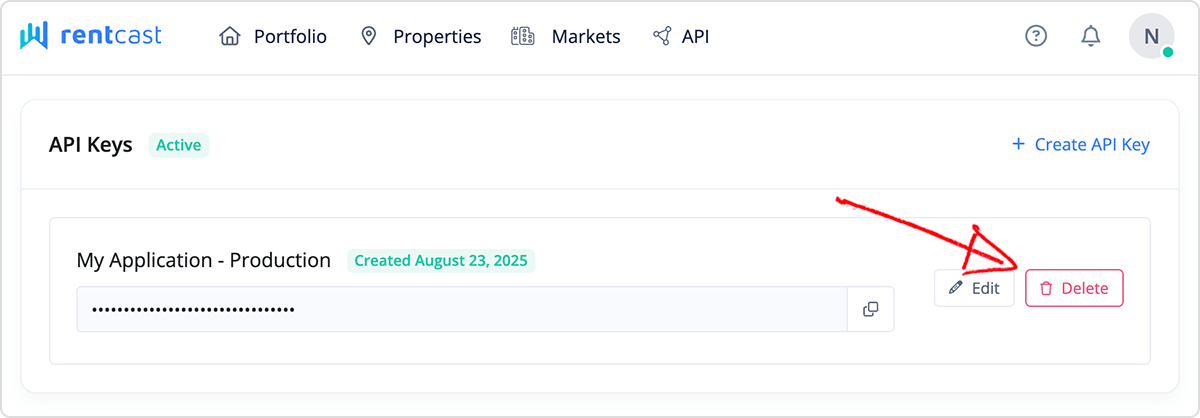
When you need to replace an old API key with a new one, we recommend first creating a new API key, updating your code to replace all occurrences of the old key with the new one, and then deleting the old key once you have verified that your code is working as intended.
Deleting an API key is final and cannot be undone. This action will immediately break all services and integrations that use that key, and you will need to replace it with a new one to continue using our API.
Authenticating API Requests
To authenticate requests to any of our API endpoints, provide your API key in the X-Api-Key header.
Below is an example request to the /properties endpoint that will retrieve the first 20 property records in Austin, TX. You can try it yourself by replacing YOUR_API_KEY with your actual valid key:
curl --request GET \
--url 'https://api.rentcast.io/v1/properties?city=Austin&state=TX&limit=20' \
--header 'Accept: application/json' \
--header 'X-Api-Key: YOUR_API_KEY'If you’re not sure about how to add headers to your API requests, check the documentation for your specific programming language, or look at the code samples on our API endpoint reference pages for examples.
Using the API Developer Playground
Our API endpoint reference pages provide an interactive developer "playground", which allows you to make API requests directly in the browser, and provides ready-to-use code samples in many popular programming languages.
To make and test API requests in your browser, follow the steps below:
- Navigate to one of the API endpoint reference pages by using the menu on the left
- Fill in your desired request query parameters in the middle of the page
- Paste your API key from your API dashboard under Credentials > X-Api-Key Header on the right side
- Click the Try It button below the code sample to make an API request
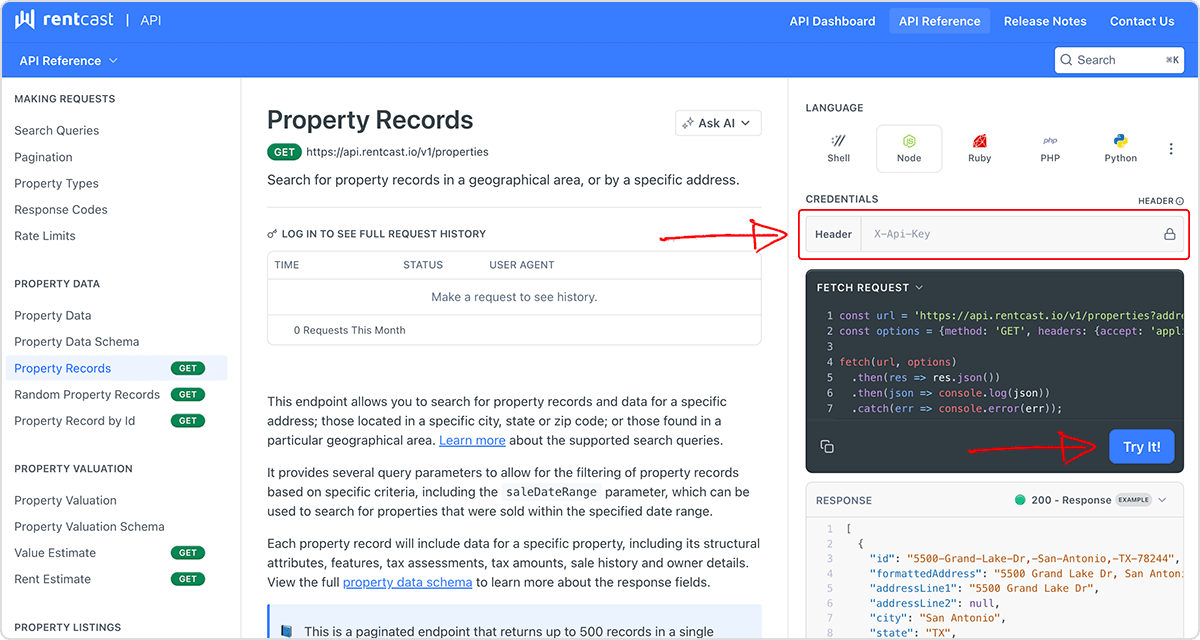
Once the API request is complete, you will see the JSON response for your query populated on the right side of the page.
You can also select your preferred programming language on the right side, and view automatically generated code samples that you can use as a starting point for developing your integration.
Any successful API request you make to our server, including those made through the API developer playground, will be counted for billing purposes. You can monitor your API usage from your API dashboard.
